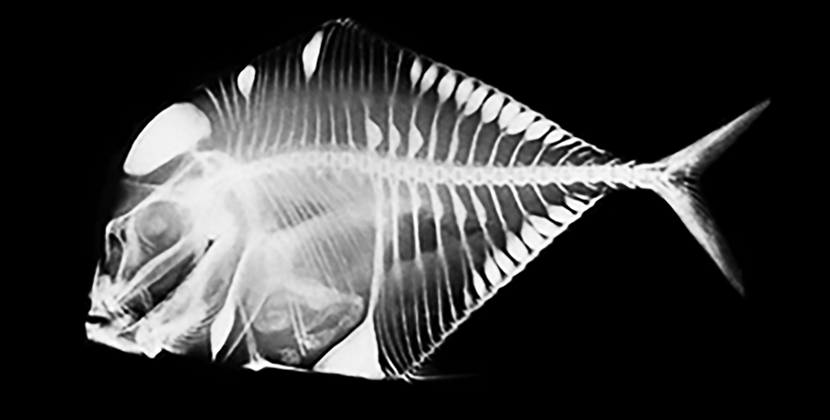
What Can Fishes Teach Us About Bone Formation?
There is a phenomenon that occurs in marine bony fishes that may hold information about bone formation that could help patients with skeletal deficiencies. The skeletons of numerous marine teleost fishes in a variety of families are characterized by a remarkable, expansive swelling of specific bones. In our survey, we found Fish Hyperostosis (FH) in taxonomically diverse groups, occurring in a minimum of 92 species, including two types of eels. Almost half of all known occurrences were in the family Carangidae (jacks). There is no evidence that it is a pathological condition. A striking feature of FH is that it occurs in exactly the same bones in every adult member of the species. Each species show a different pattern of bone involvement. We interpret the intraspecific predictability and site-specificity of FH as evidence of genetic control.
Fish bones are small because they are not as important for load-bearing as for terrestrial species. Terrestrial bones are highly cellular and adapt to changing loads in order to withstand them. Typically, fish bones have no cells and are formed as secretions like our hair and nails. In hyperostotic bone, however, we found cells and evidence of rapid cellular activity. The juxtaposition of cellular and acellular bone raises important questions about basic processes of cell and tissue differentiation in mineralized tissues and a possible role of hyperostotic bone in metabolism. In fact, we compared the effects of fracturing adjacent hyperostotic and normal bones. The normal bones were not capable of fracture healing because of the absence of cells. The FH bones healed quickly. Understanding the mechanisms for these differences may yield new approaches to skeletal deficiencies.
There is no known function for FH. No general correlations between FH and environmental factors, aside from salinity, are apparent, as affected species include both deep water (benthic) and open sea (pelagic) forms. Hyperostosis occurs almost exclusively in marine bony fishes and predominantly in tropical and subtropical species, with relatively few occurrences in temperate species. Among closely related species in the same habitat, not all display FH. Speculated roles in buoyancy or equilibrium are not supported by data.
In sum, hyperostotic bone in unrelated marine fishes has many attributes of human cellular bone and is remarkable in its occurrence as a cellular focus in otherwise acellular bones.
